The New Year began violently in Afghanistan, with three bombings killing 13 people in one day in Kandahar. In addition, the French Defense minister told soldiers he backed US efforts to open peace talks with the Taliban, and President Obama was in talks about defense priorites as the US military readied for challenges from China and Iran while downplaying any future counterinsurgency efforts like the ones in Afghanistan or Iraq. Meanwhile, the foreign troop withdrawal process continued, as more responsibility was transferred to Afghan security forces. The goal is a complete withdrawal by the end of 2014. -- Lloyd Young (41 photos total)

Afghan policemen march during the transfer of authority from NATO troops to Afghan security forces in Chaghcharan, Ghor province, west of Kabul, Afghanistan on Jan. 4. The security responsibilities of Chaghcharan, the provincial capital of Ghor province is handed over from the NATO forces to Afghan security forces. The process of taking over security from over 130,000-strong NATO-led ISAF forces by Afghan troops would be completed by the end of 2014 when Afghanistan will take over the full leadership of its own security duties from US and NATO forces. (Hoshang Hashimi/Associated Press)

An Afghan police officer inspects the scene of Tuesday nights explosion in Kandahar, south of Kabul, Afghanistan on Jan. 4. Officials say three explosions in a day have killed 13 people in the southern Afghan city of Kandahar. (Allauddin Khan/Associated Press)

Afghan relatives inspect the eyes of a boy who was wounded after a suicide attack at a hospital in Kandahar on Jan. 3. A suicide bomber on a motorbike struck a crowded bazaar in the southern Afghan city of Kandahar on Jan. 3, killing 4 children and a policeman, a police commander said. (Jangir/AFP/Getty Images)

French Defense Minister Gerard Longuet delivers a speech to French soldiers, part of the NATO- led International Security Assistance Force (ISAF), during his visiting in Kabul, Afghanistan on Jan. 1. France's defense minister on Sunday backed US efforts to open peace talks with the Taliban, even as NATO reported the death of another service member that brought last year's toll to 544 troops killed in Afghanistan. (Musadeq Sadeq/Associated Press)

Captured Taliban fighters are presented to the media in Herat on Jan. 15. Herat security forces captured 7 insurgents from Herat, officials said in a statement. (Aref Karimi/AFP/Getty Images)

Taliban fighters put their weapon down after they joined the Afghan government forces during a ceremony in Herat on Jan 5. Nine fighters left the Taliban to join government forces in western Afghanistan. (Aref Karimi/AFP/Getty Images)

Newly-graduated Afghan National Army soldiers march during their graduation ceremony at the Afghan National Army training center in Kabul on Jan. 26. (Shah Marai/AFP/Getty Images)

A newly graduated Afghan National Army soldier holds up his certificate during the graduation ceremony at the Afghan National Army training center in Kabul on Jan. 26. (Shah Marai/AFP/Getty Images)
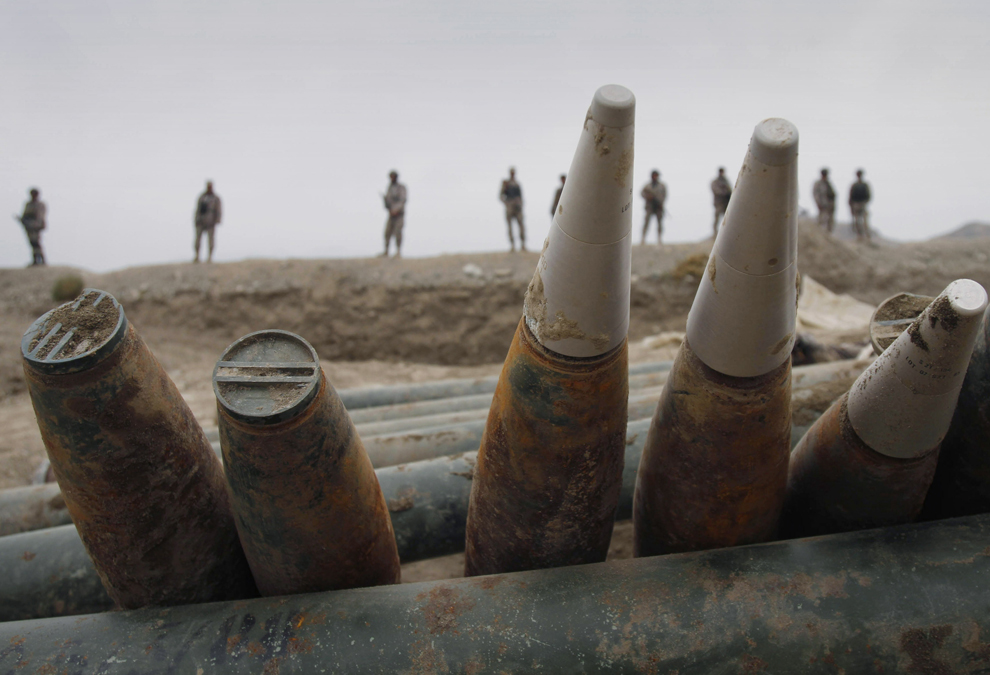
Discovered ammunitions and missiles are seen at a weapons cache on Jan. 14 in Goshta district, Nangarhar province, east of Kabul, Afghanistan. Afghan border policemen discovered a cache which contained some missiles and other kinds of ammunitions in Nangarhar province, police officials said. (Rahmat Gul/Associated Press)

French Defense Minister Gerard Longuet (right) stands in front of the 4 coffins of French soldiers to pay his respects during a ceremony at Kabul Airport in Kabul on Jan. 21. France's defense minister arrived in Kabul for top-level talks as Paris warned it could accelerate its withdrawal from the 10-year war after an Afghan soldier shot the French soldiers. (Joel Saget/AFP/Getty Images)

A soldier watches from a distance during a burial service at Arlington National Cemetery on Jan. 13 in Arlington, Virginia. US Army Spc. Ronald H. Wildrick, Jr. was killed by an improvised explosive device in December while serving in the Kunar province of Afghanistan. (Brendan Smialowski/Getty Images)
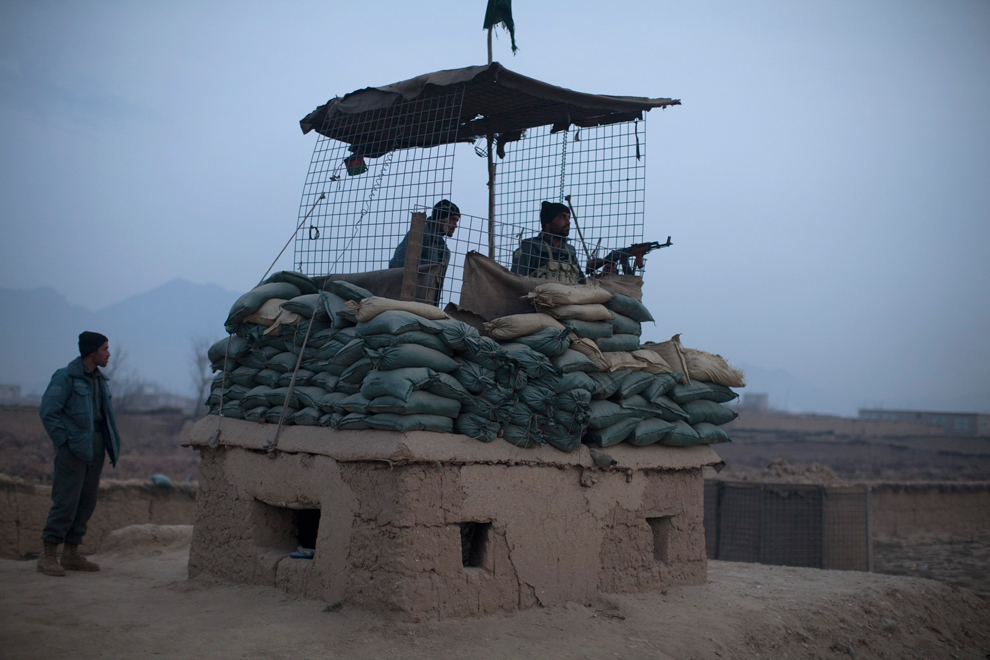
Afghan policemen keep watch at a post on a highway, north of Kabul on Jan. 3. (Ahmad Masood/Reuters)
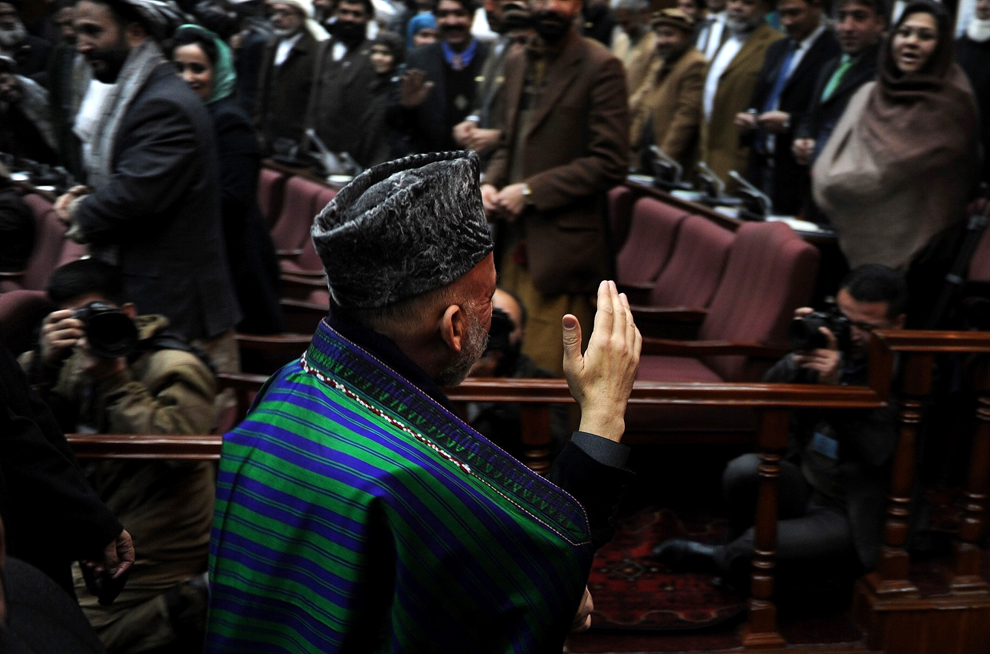
Afghan President Hamid Karzai waves to Members of Parliament, as he walks out after his speech on the opening session of the Parliament in Kabul on Jan. 21. Speaking at the opening of a new session of parliament Karzai reiterated that his government accepted the plan for a Qatar office "for the purpose of peace". He noted that his government had also recently met a delegation from the second biggest insurgent group, Hizb-e-Islami, "in brotherhood and good atmosphere" and emphasized that peace negotiations would continue. (Shah Marai/AFP/Getty Images)
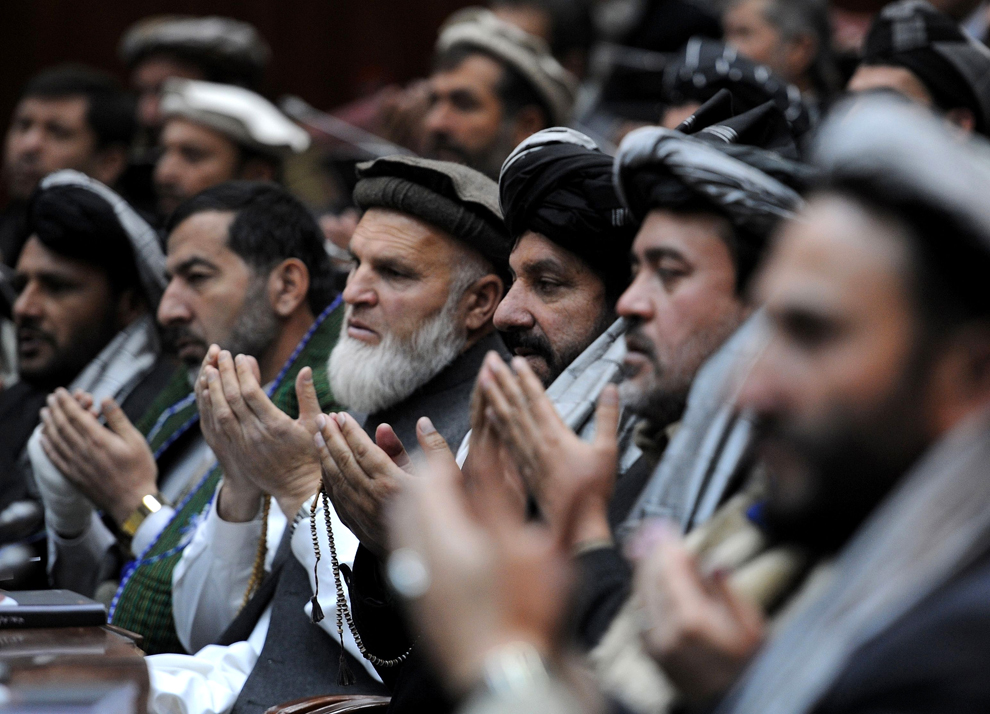
Members of Parliament pray on the opening session of the Parliament in Kabul on Jan. 21. (Shah Marai/AFP/Getty Images)
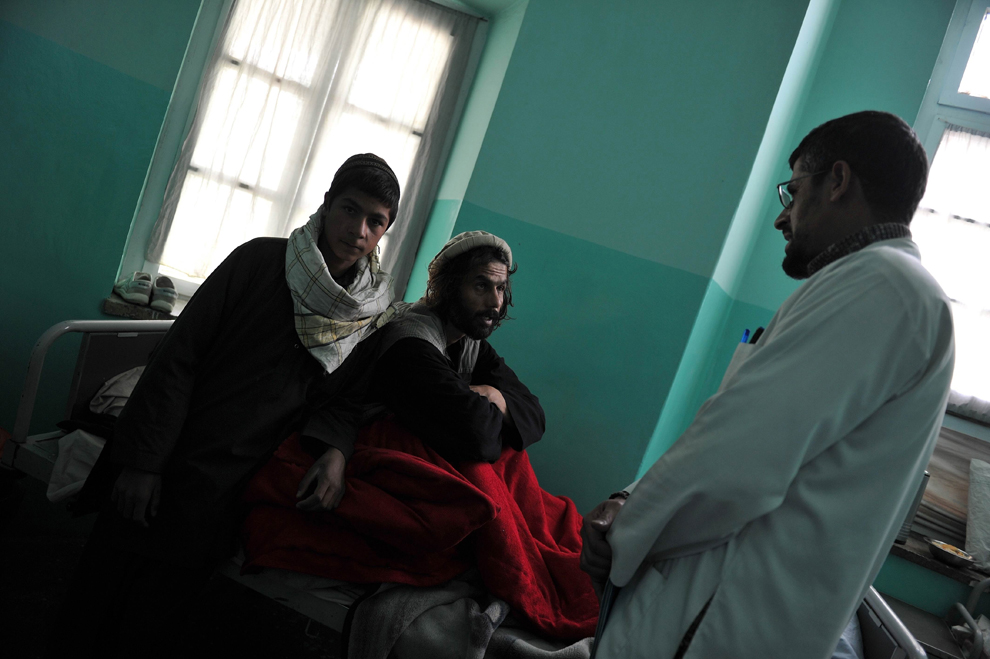
An Afghan doctor talks with a patient at a psychiatric ward of a local hospital in Kabul. Mohammad Qasim, a 58 year-old butcher, is traumatized, depressed and anxious -- like 50 percent of his fellow Afghans after 30 years of war, according to government figures. Qasim saw his wife, daughter-in-law and two grandsons aged five and six die in a horrific suicide bomb blast in Kabul last month. More than 70 other people were also killed in the attack targeting a crowd of worshippers at a shrine during the Shiite holy day of Ashura on Dec. 6. (Massoud Hossaini/AFP/Getty Images)
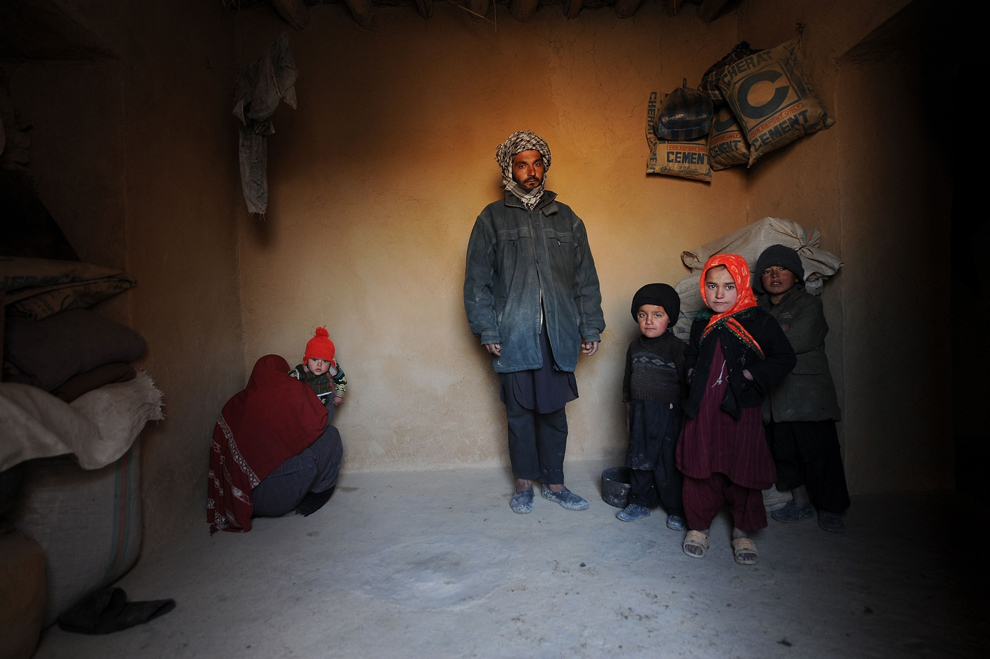
Internally displaced Afghan Amir Mohammad poses with his wife and children at a camp in Dihdadi district on the outskirts of Mazar-i-Sharif in Balkh province on Jan. 8. Mazar-i-Sharif is the capital of Balkh province with existence of multi-ethnic groups such as Uzbeks, Turkmen, Tajiks and Hazaras. In literary Mazar-i-Sharif means ‘Respected Shrine’ but the city is known by tourists as city of the blue mosque which is located in the center of the city known as the Shrine of Hazrat Ali. (Qais Usyan/AFP/Getty Images)
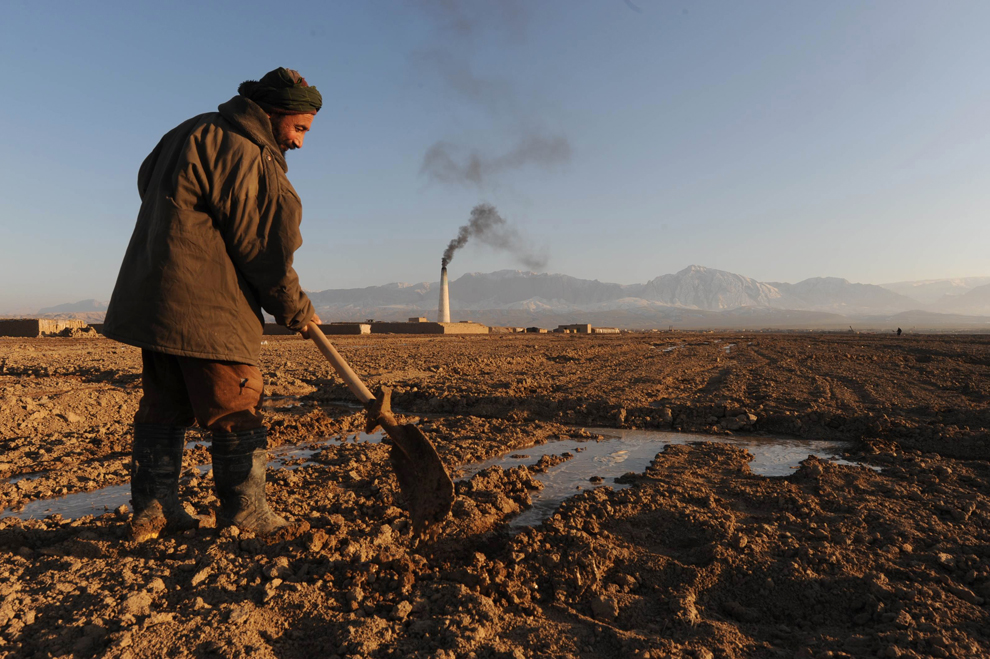
An Afghan farmer works the land on his field in the city of Mazar-i Sharif Balkh province on Jan. 9. Mazar-i Sharif is the capital of Balkh province with existence of multi-ethnic groups such as Uzbeks, Turkmen, Tajiks and Hazaras. (Qais Usyan/AFP/Getty Images)
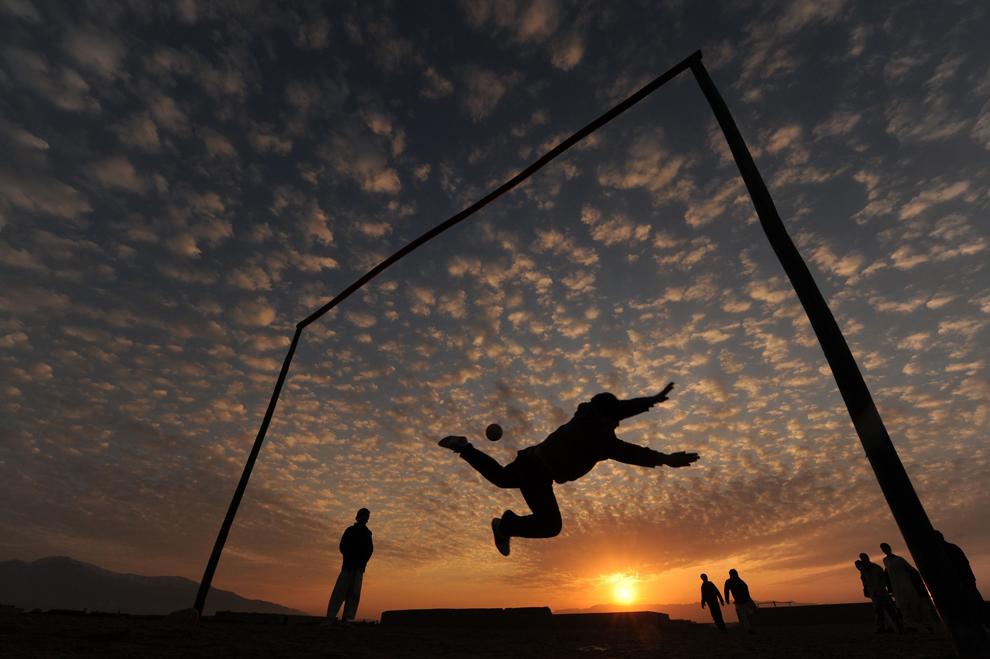
Afghan boys play football in sunset in Mazar-i-Shraif on Jan. 10. Football is one of the most popular games in Afghanistan and is played on dusty dry ground more often than grass. (Qais Usyan/AFP/Getty Images)
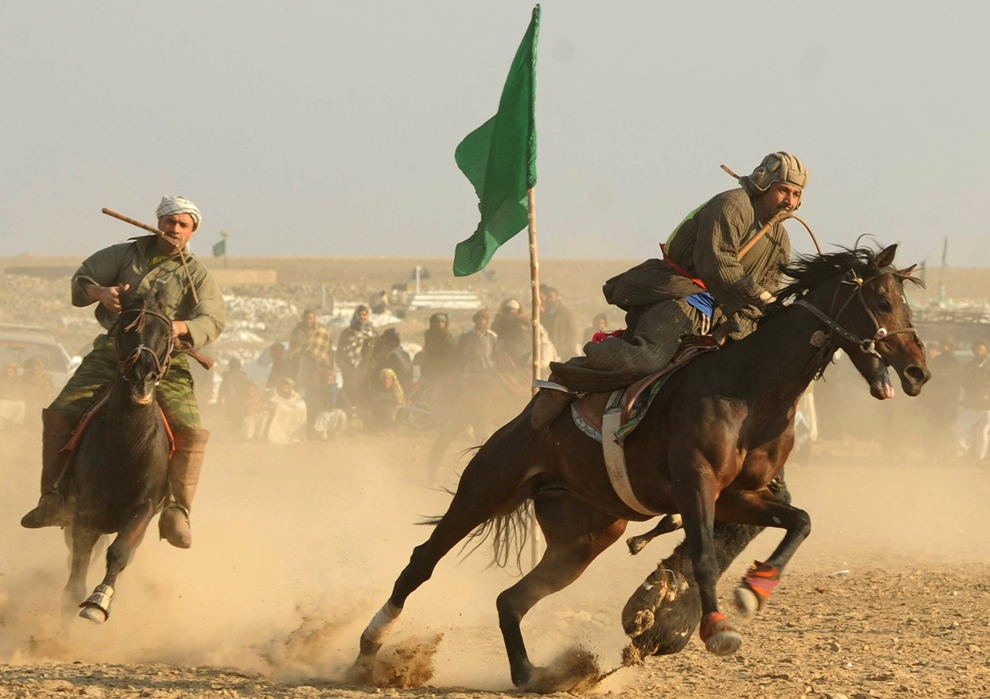
Afghan horsemen compete for the goat carcass during a game of Buzkashi in Herat on Jan. 6. The ancient game of Buzkashi is an Afghan national sport which is played between two teams of horsemen competing to throw a goat carcass into a scoring circle. (Aref Karimi/AFP/Getty Images)
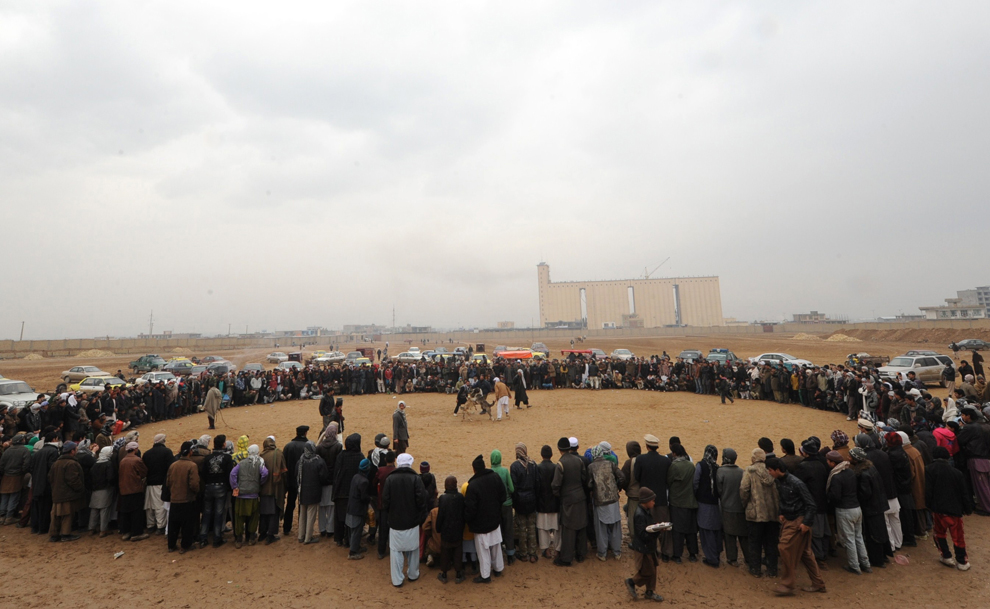
Afghan men watch a dog-fighting session in Mazar-i-Sharif on Jan. 13. Dog-fighting, which was outlawed under Taliban rule, is now legal in the war-torn country with thousands of spectators gathering each Friday from November to March to watch the fights. (Qais Usyan/AFP/Getty Images)
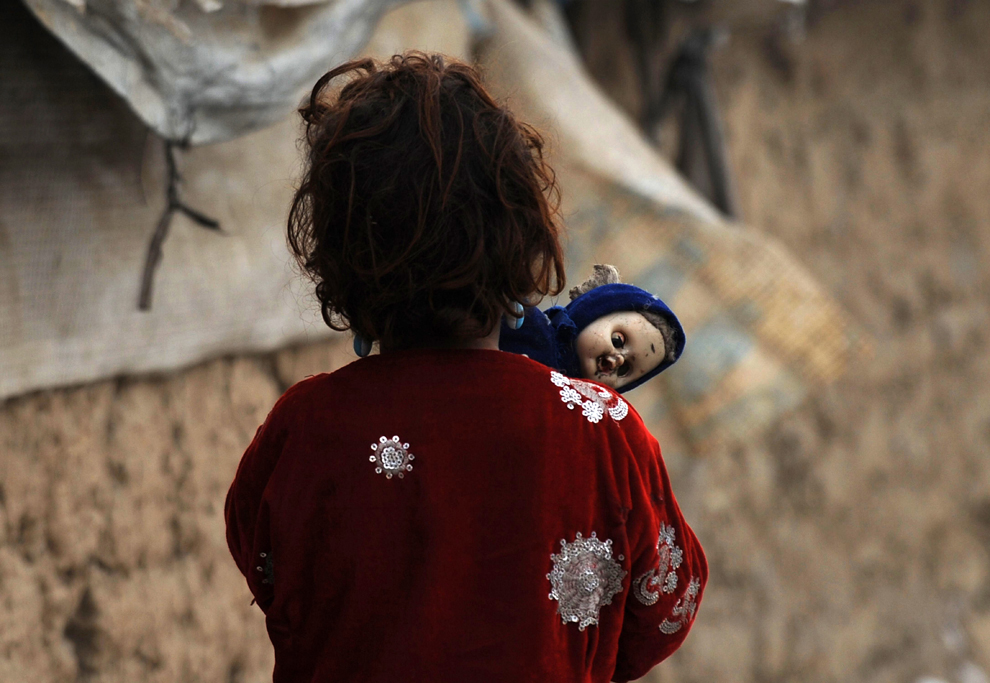
An Afghan girl holds a doll in a displaced camp in Kabul on Jan. 25. Despite massive injections of foreign aid since the fall of the Taliban in 2001, Afghanistan remains desperately poor with some of the lowest living standards in the world. (Qais Usyan/AFP/Getty Images)
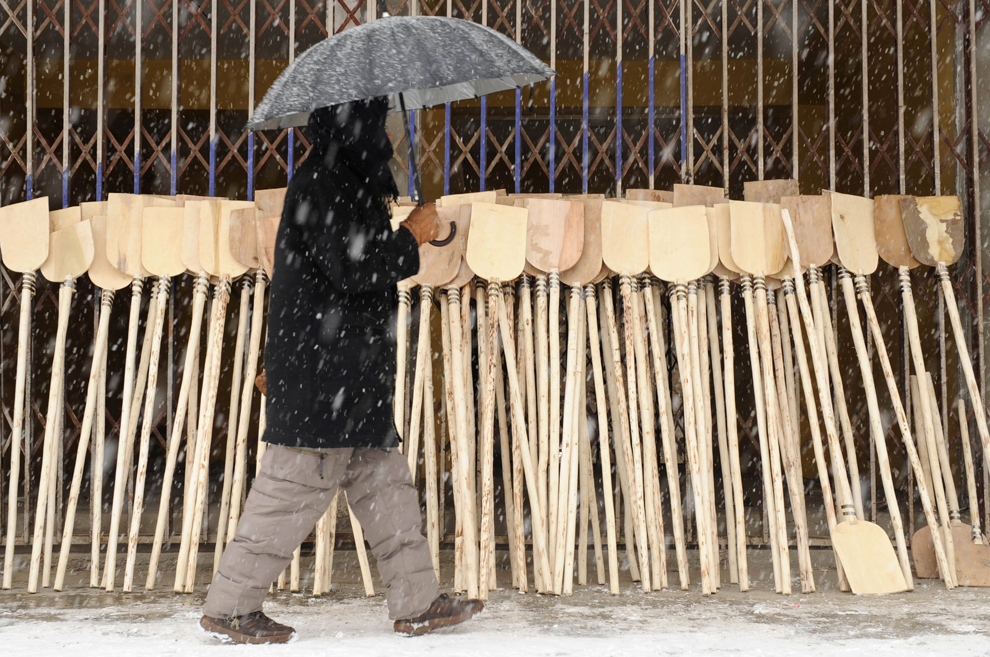
A man walks past wooden shovels in Kabul on Jan. 22. The death toll from heavy snowfalls and avalanches rose to at least 28, an official said today. Dozens more people have been injured or are trapped in their homes under up to three meters (10 feet) of snow in remote Badakhshan province, where main roads have been cut, making it difficult for rescue workers to reach affected villages. (Qais UsyanAFP/Getty Images)
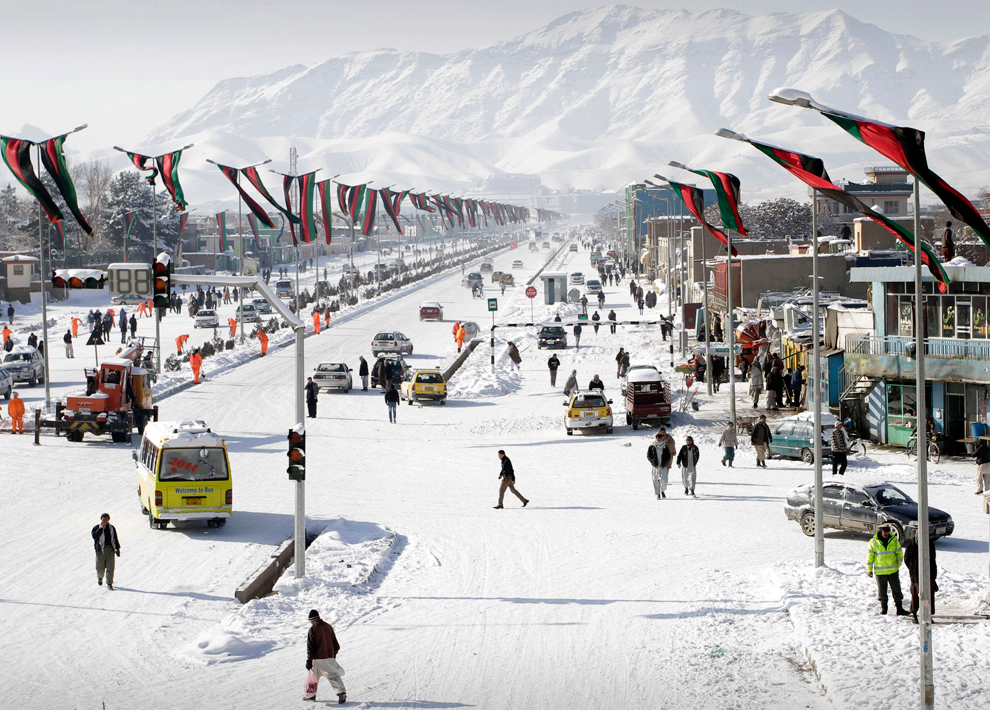
Afghans walk down a snow covered road after a snowstorm in Kabul, Afghanistan on Jan. 23. (Musadeq Sadeq/Associated Press)

An Afghan man makes a snowman outfitted with body armor and a weapon after a snowstorm in Kabul, Afghanistan on Jan. 15. (Musadeq Sadeq/Associated Press)

Afghan villagers search for avalanche victims in Raghistan, Badakhshan province, north of Kabul, Afghanistan on Jan. 18. Around 29 people have died in avalanches reported since Monday in Badakhshan province, according to the Afghan National Disaster Management Agency and at least 40 more people have been injured and rescuers were struggling to reach areas of Afghanistan's mountainous northeast that have been cut off by heavy snows. (Sharif Shayeq/
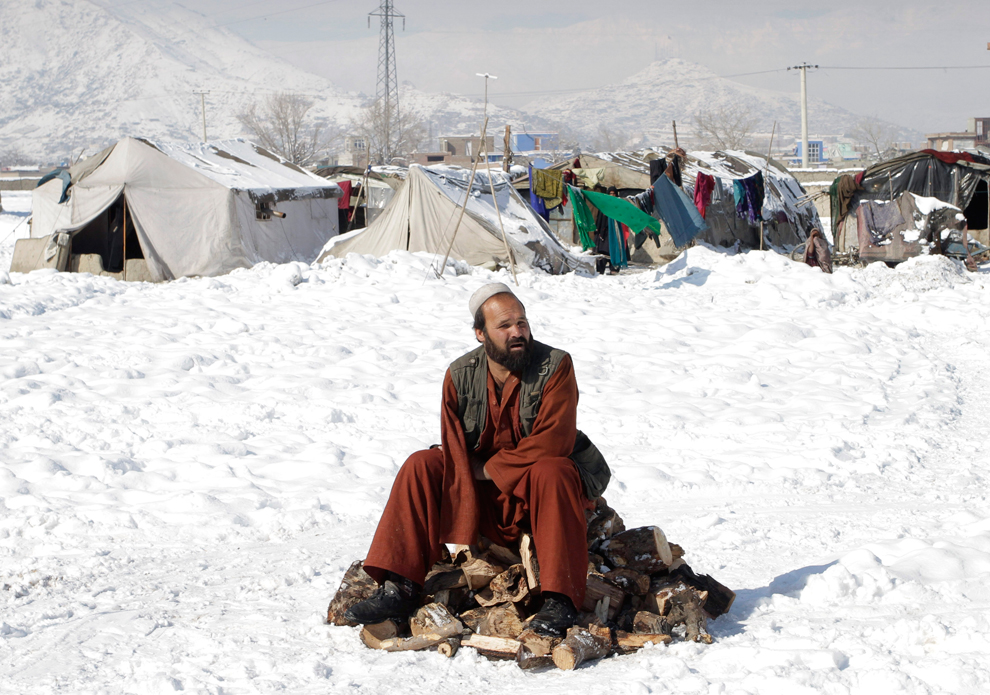
A disabled internally displaced man sits on his firewood donated by Welt Hunger Hilfe "German Agro Action" , as he waits for transportation at a refugee camp in Kabul, Afghanistan on Jan. 23. Over 300 internally displaced families received the firewood. (Musadeq Sadeq/Associated Press)
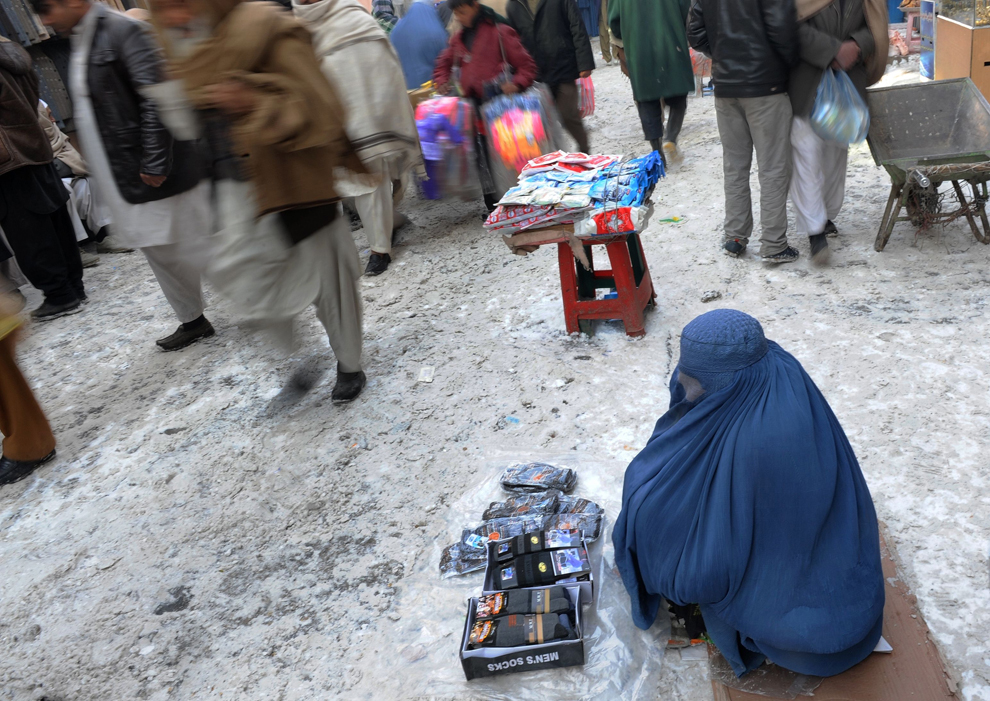
A burqa clad Afghan woman sells socks on a street during a cold winter day in Kabul on Jan. 23. With a population of some 29 million, 23 percent of the total Afghan population live in urban areas. Afghanistan is the 42nd most populous and 41st largest nation in the world. (Qais Usyan/AFP/Getty Images)

An Afghan boy enjoys the snowfalls in Kandahar on Jan. 24. Dozens more people have been injured or are trapped in their homes under up to 10 feet of snow in remote Badakhshan province, where main roads have been cut, making it difficult for rescue workers to reach affected villages. (Jangir/AFP/Getty Images)
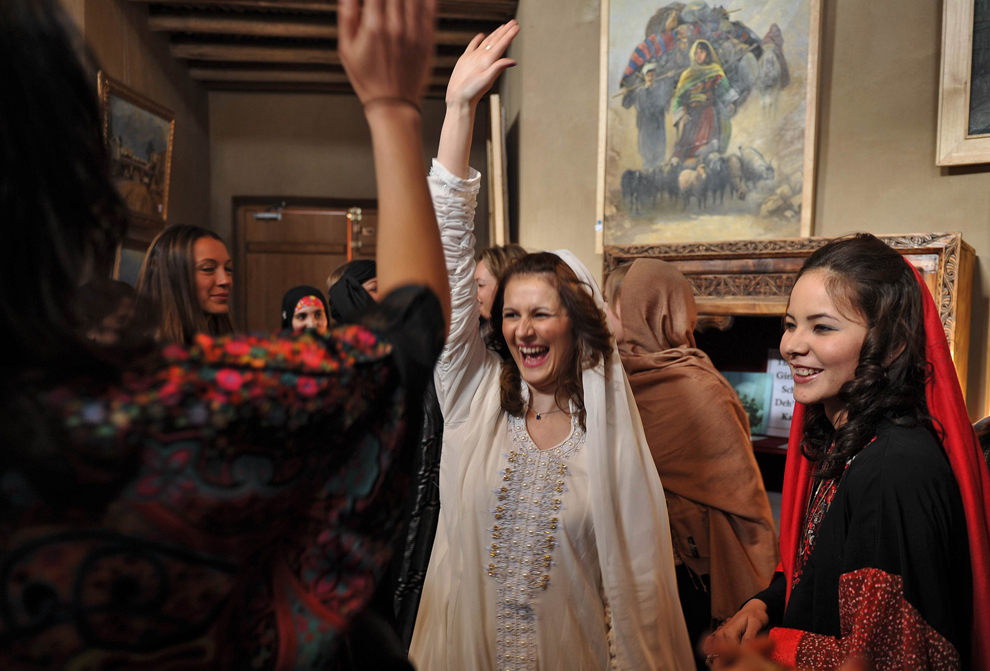
Models present Afghan dresses created by Razia's Ray Of Hope Foundation during a fashion show at "Le Jardin de Taimani" in Kabul on Jan. 27. (Massoud Hossaini/AFP/Getty Images)
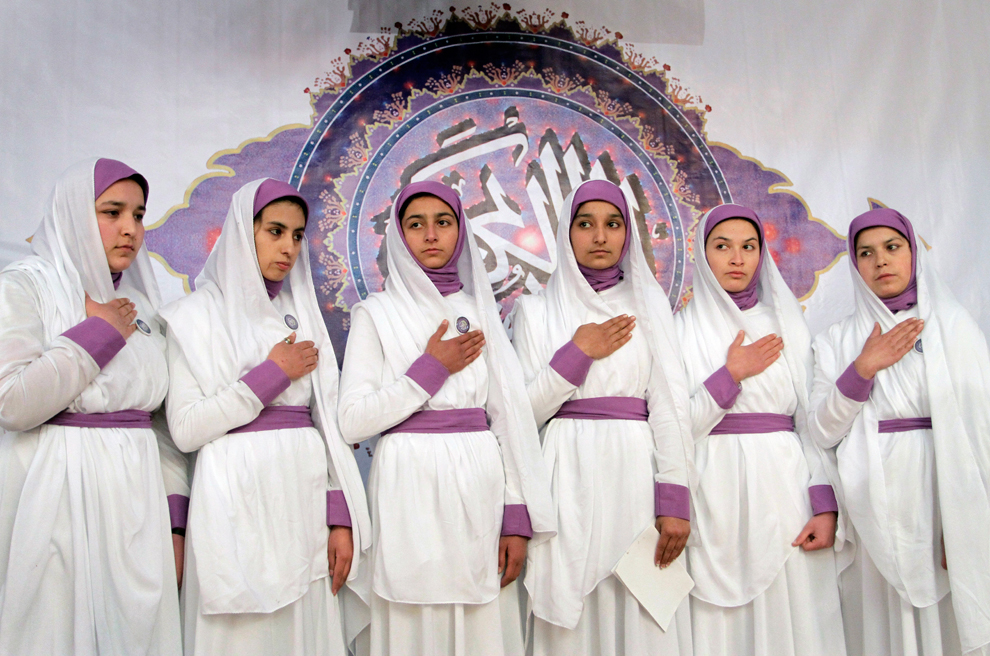
Afghan girls listen to the Afghan national anthem during the unveiling ceremony of world's biggest copy of the holy Quran in Kabul, Afghanistan on Jan. 12. Afghan calligrapher Hussaini Khedri claims to have completed the writing of the world's biggest copy of Islam's holy Quran in 5 years along with his nine students. (Musadeq Sadeq/Associated Press)
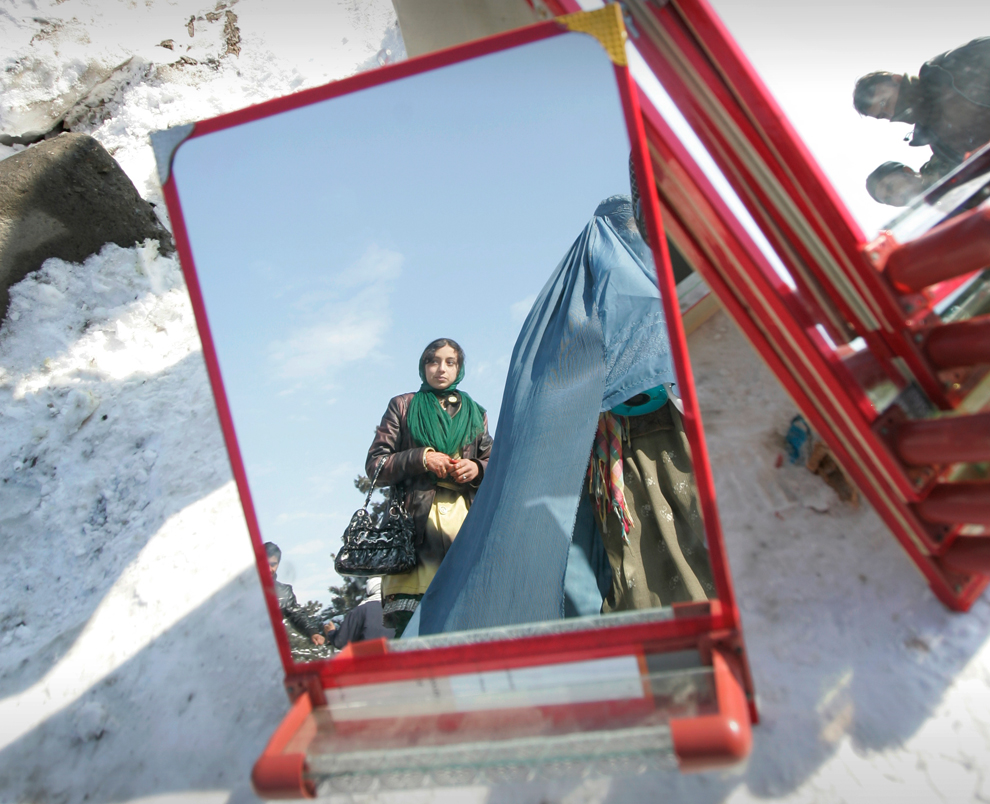
Afghan women are reflected in a mirror displayed for sale in Kabul, Afghanistan on Mon. Jan. 23. (Ahmad Nazar/Associated Press)

Afghan refugee boys look out through a gap in a cloth used as makeshift wall at a refugee camp in Kabul, Afghanistan on Jan. 5. (Ahmad Nazar/Associated Press)
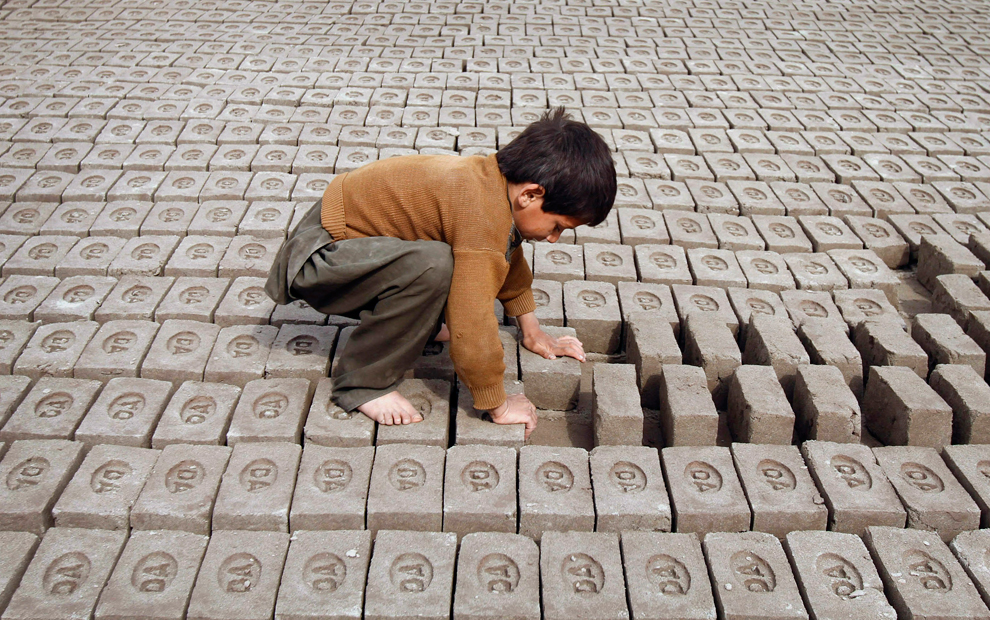
An Afghan child rotates bricks to help them dry faster at a brick factory in Surkhroad, Nangarhar province east of Kabul, Afghanistan on Jan. 30. Thousands of Afghan children work to make money to support their families in Afghanistan. (Rahmat Gul/Associated Press)
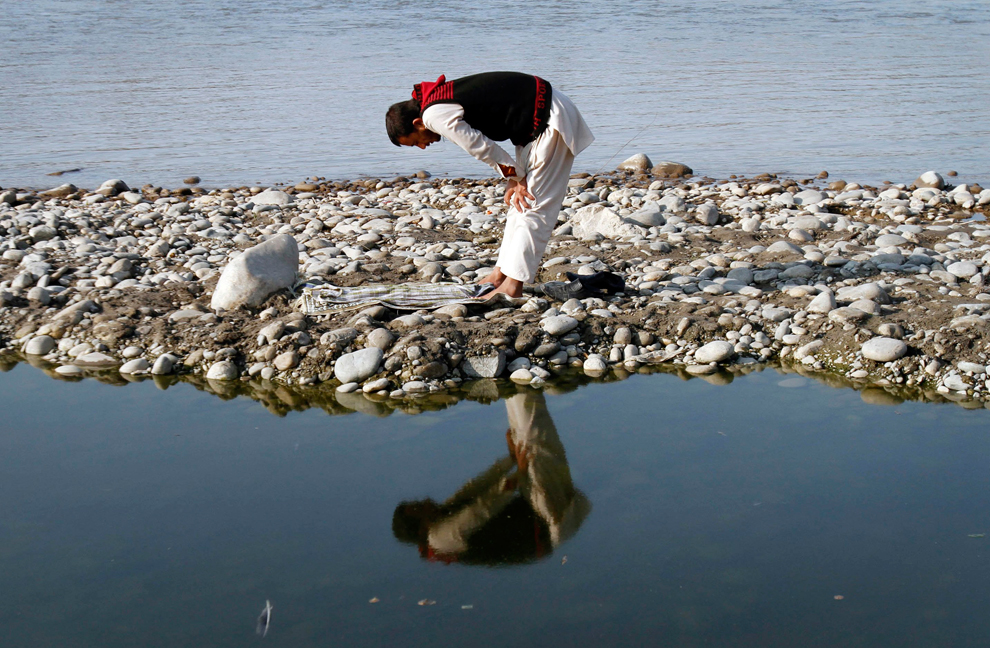
Afghan youth Haroon Naseri 20, prays on the outskirt of Jalalabad, Nangarhar province east of Kabul, Afghanistan on Jan. 8. (Rahmat Gul/Associated Press)
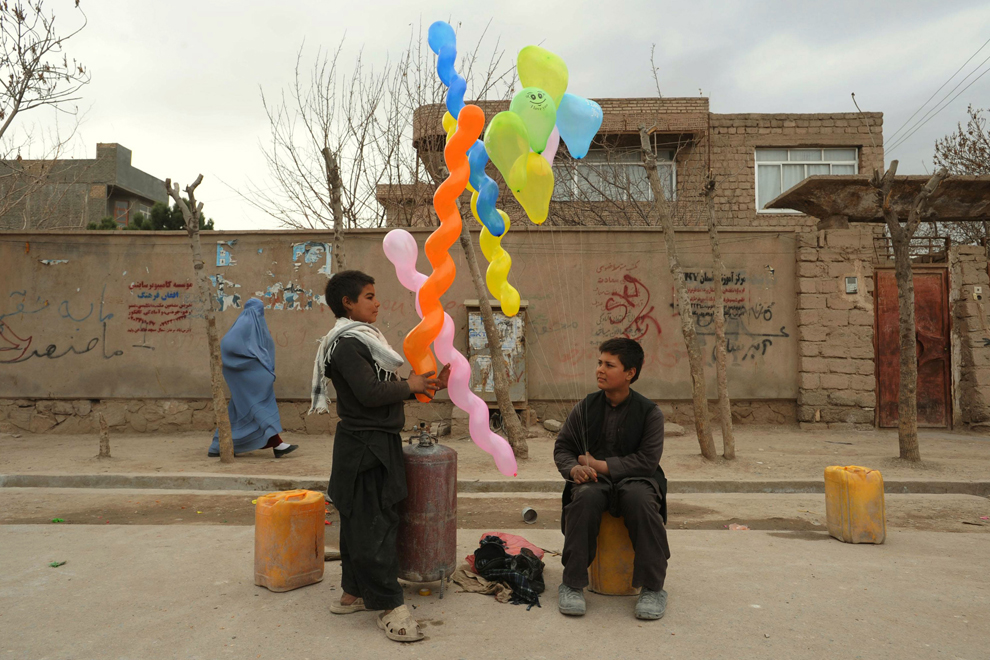
Afghan boys sell balloons on a street in Herat on Jan. 29. With a population of some 29 million, 23 percent of the total Afghan population live in urban areas. Afghanistan is the 42nd most populous and 41st largest nation in the world. (Aref Karimi/AFP/Getty Images)
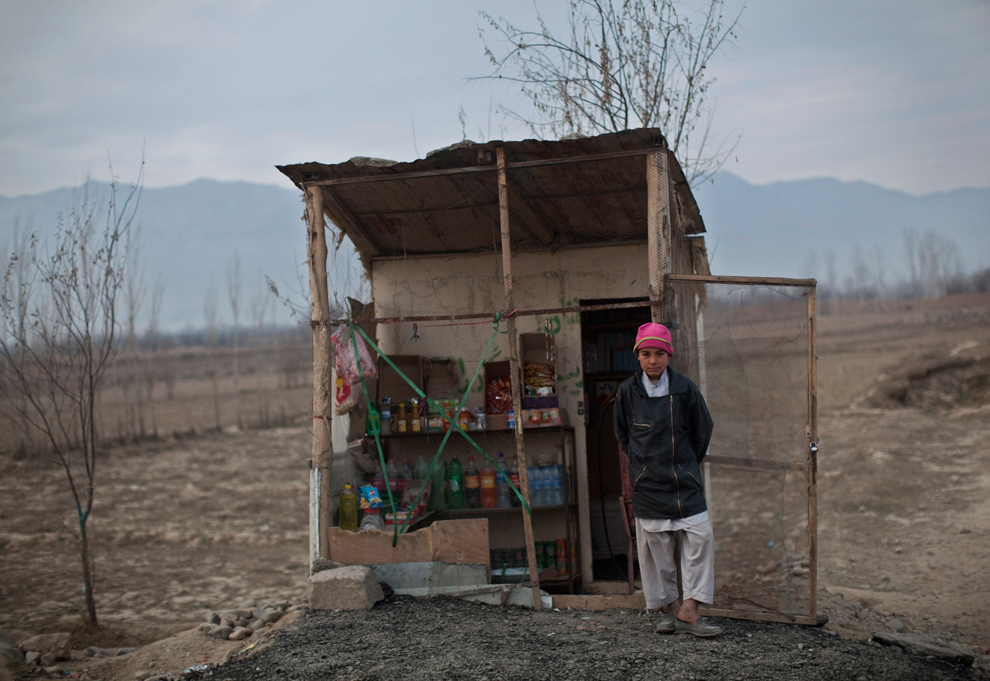
An Afghan boy waits outside his shop for customers in Bagram, north of Kabul on Jan. 3. (Ahmad Masood/Reuters)

An Afghan girl practices inside a boxing club in Kabul. Female boxing is still relatively unusual in most countries, but especially in Afghanistan, where many girls and women still face a struggle to secure an education or work, and activists say violence and abuse at home is common. Many in this conservative society still consider fighting taboo for women, and the country's first team of female boxers deal with serious threats. (Ahmad Masood/Reuters)
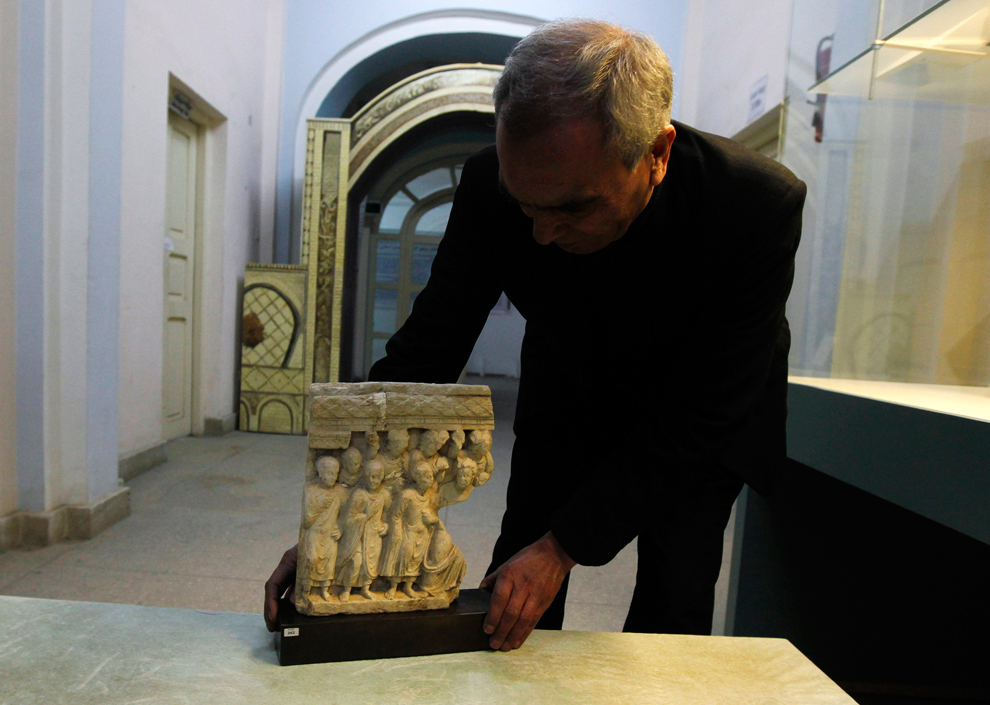
An Afghan specialist displays an ancient pre-Islamic sculpture that was returned to Afghanistan at the Afghan National Museum in Kabul on Jan. 30. Germany this week returned the sculpture looted during Afghanistan's civil war, giving hope to Kabul's cultural mavens that the rest of its stolen treasures will also make their way home. (Omar Sobhani/Reuters)
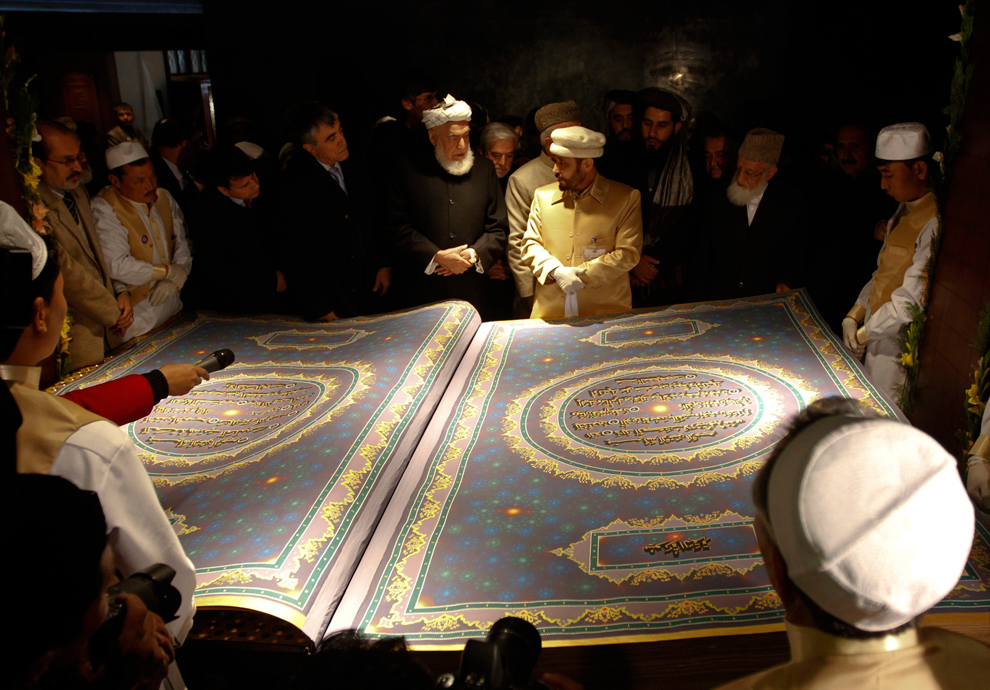
Calligrapher Mohammad Sabir Khedri (center right) gives information about the biggest Koran in the world to Afghan officials during its inauguration ceremony in the Hakim Nasir Khosrow Balkhi library in Kabul on Jan. 12. The Afghan calligrapher has worked for five years to create the world's biggest Koran, a bid to show the world that Afghanistan's rich cultural heritage and traditions have been damaged but not destroyed by 30 years of war. (Mohammad Ismail/Reuters)
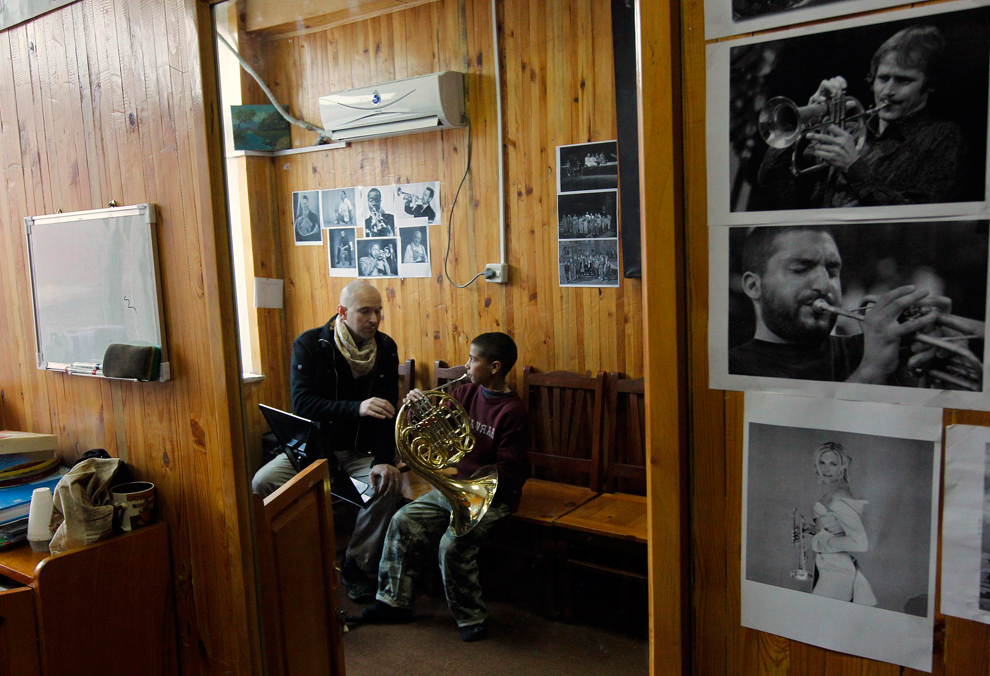
A student learns to play the French Horn at the Kabul Music Academy on Jan. 7. In Afghanistan's sole music academy, students learn how to play traditional and western instruments as part of a government initiative to relieve the pains of decades of war through music. Despite a rich musical legacy, Afghanistan's melodic development has been severely disrupted by years of war and outright banned during the austere rule of the Taliban. At the Afghanistan National Institute of Music, orphans learn how to sing and play instruments alongside talented promising musicians who are selected on merit. (Omar Sobhani/Reuters)
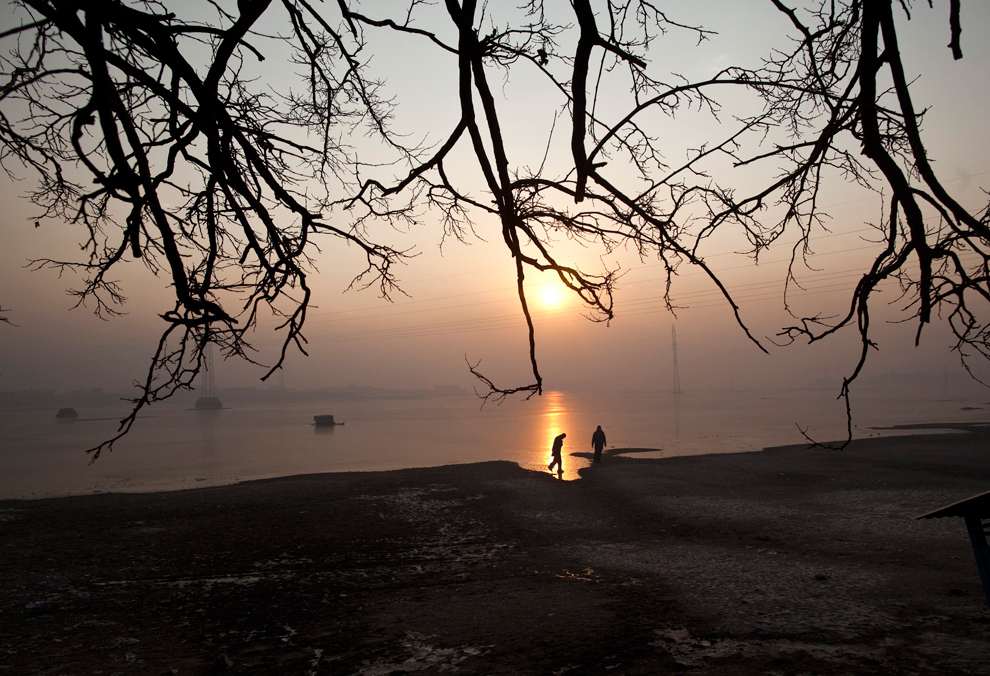
We often leave our dinghy for long periods unattended in places where things tend to find new homes.
ReplyDelete2gig control panel